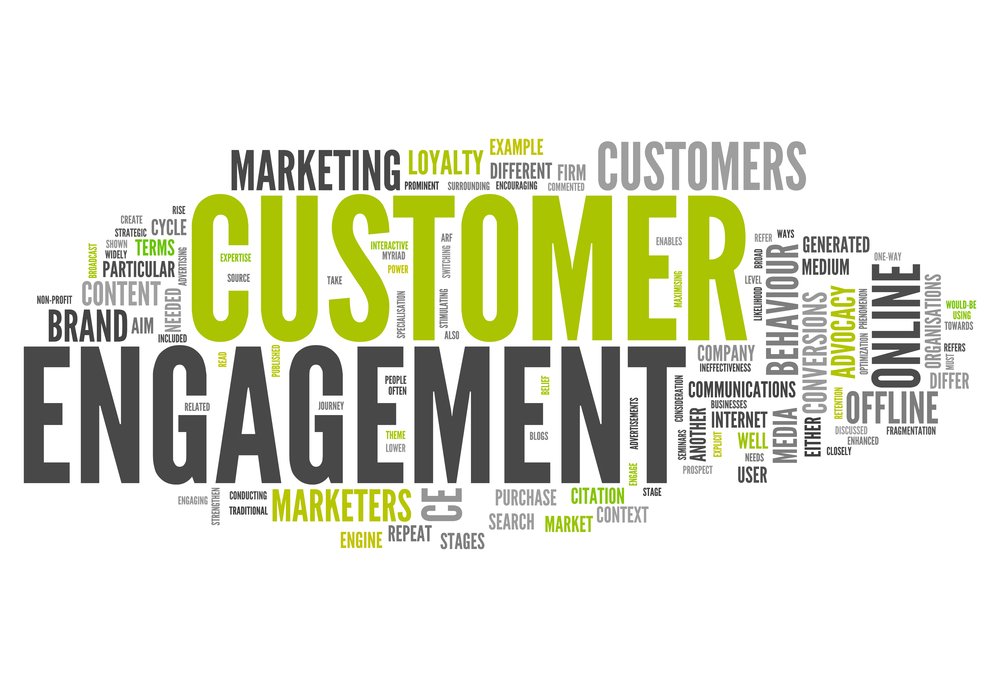As brands seek to remain relevant and deliver value to their customers in the digital age, customer engagement has become a focal point on the agenda. Marketers now know that engaged customers buy more, spread more word of mouth, and are more satisfied and loyal.
Highly engaged customers gain more value from your core offering and will devote their own time and effort to creating value on behalf of your brand. Brands that invest in a well-thought-out customer engagement program are seeing meaningful business results through co-designed products or services, user-generated content, grassroots publicity, and broad brand reach.
To get to these kinds of results, you need a well-designed and managed engagement strategy—not just a collection of ad-hoc tactics.
In our experience working with clients, we have identified five key steps to developing an effective customer engagement program:
- Align The Organization
The strongest customer engagement programs don’t rely only on individual marketing touch points. They leverage the entire customer experience as a continuum for customers to deepen their relationship with the brand.
This “continuum of engagement” will require a cross-functional team across the company—marketing, product, customer service, etc.—to develop and execute a seamless customer engagement program regardless of channel or stage in the customer life cycle.
Executive support is critical at the early stages—helping secure resources, selecting members of the cross-functional team, and establishing a chain of command. An effective practice when selecting program sponsors is to find an executive champion outside of marketing who will co-sponsor the initiative along with the CMO.
Furthermore, a critical step in this phase is to define what “engagement” means for your brand.
- Design Your Strategy
After gaining executive support and buy-in from key teams, you’ll want to develop an overarching strategy for your customer engagement program. Not only should this strategy be aligned to key organizational objectives, it should provide a guide for the relationship your brand wants with customers. It should outline the value your customers will get from engaging with you, identify your business goals for the program, establish measures of success, and present a plan for tapping customers’ key motivations to engage.
In this phase, you’ll hypothesize a “theory of engagement” for your program: which types of engagement activities deliver the most results and which emotions these activities should tap into to drive customer behavior. This ideation process is a valuable part of aligning the team around the objectives of the engagement program. You should validate and refine your hypotheses using data, insights, and driver modeling.
The outcome of the strategy phase will be a customer engagement ladder that depicts a customer’s journey toward high levels of engagement with your brand. Your ladder should be designed to realize increasing value for your customers. A well-designed engagement ladder becomes the architecture that supports tactics and campaigns.
- Develop Tactics
A customer engagement program needs to operate seamlessly across channels. To maximize value, it should be consistent and synced, regardless of where a customer engages. Since today’s customer expects always-on, personalized, and unified experiences from brands, it’s critical to offer the right engagement opportunities—tailored to each customer—across all channels: mobile, web, social, and physical.
Of particular importance, mobile is one of the most powerful platforms available to brands. Even very simple mobile engagement produces strong impacts on both web and physical engagement, as well as on sales. In addition, depending on your industry or business, social media offers multiple opportunities to facilitate and encourage customer engagement.
Online and traditional advertising, loyalty programs, brick and mortar locations, and customer service also offer engagement opportunities. They should be optimized to put customers on the engagement path and help them move up the ladder over time. These programs can act as feedback loops to help route customers back onto the engagement ladder over and over, regardless of where they interact with the brand.
- Pilot And Scale
When preparing to introduce new components of an engagement program, build in the discipline to filter ideas and test them with customers to prove their value. Testing techniques that have been effective for our clients include agile pilots, A/B testing, and cohort analysis.
Once a new program has been validated and optimized through piloting, it’s time to scale. Scale requires putting the right processes and systems in place to offer and manage each new program for the broader market.
- Measure And Manage
The measurement strategy should provide leaders and teams the information needed to make smart business decisions and optimize the engagement program. When determining what to measure, it’s important to identify the key performance indicators (KPIs) that matter most and find ways to streamline information so the critical insights come clearly to the surface in actionable ways.
A challenging but valuable exercise is to develop a customer engagement score—combining multiple behavioral measures of engagement into one KPI. Increases in this score can be linked to improved sales and other business results, helping quantify the ROI and value of your engagement program. Furthermore, customer engagement scores can also contribute to predictive customer lifetime value models.
Other sophisticated methods of customer engagement measurement can produce what we call “magic numbers:” flags that call out critical behaviors requiring action, such as flags that indicate “at risk” customers who are likely to churn and need reactivation or “ready to advocate” individuals who should be recruited into advocacy programs or provided with special referral offers.
Customers today decide when and how to interact with brands or whether to ignore a brand entirely. A customer engagement program is essential to capture and retain customers—not just their dollars, but also their respect, affinity, excitement, and willingness to spread word of mouth.
Now is the time to think through this process and deepen your relationship with customers—and in return your brand will increase satisfaction, loyalty, reach, and sales.
CUSTOMER ENGAGEMENT CXREFRESH CX CUSTOMER EXPERIENCE GLOBAL CX


